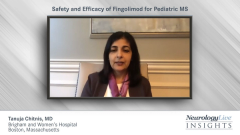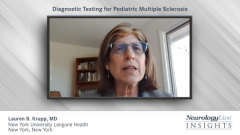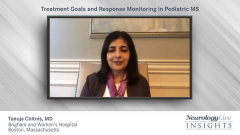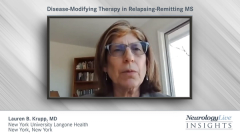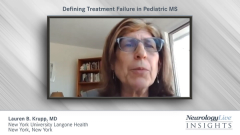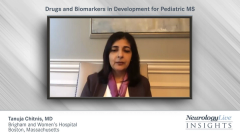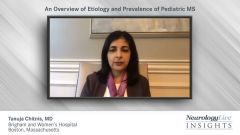
Disease-Modifying Therapy in Relapsing-Remitting MS
Leaders in neurology provide insight into first-line disease-modifying therapies for relapsing-remitting multiple sclerosis, such as interferon or glatiramer acetate, and glucocorticoids for acute events.
Episodes in this series

Tanuja Chitnus, MD: The most common clinical subtype in pediatric MS [multiple sclerosis] is relapsing-remitting MS. About 95% of all pediatric patients are relapsing-remitting at onset. If I saw a patient with progressive pediatric MS, I would be very suspicious for a metabolic disorder; that’s an important differential diagnosis. Another important factor is that patients with pediatric MS have a high relapse rate; this can be 2 to 3 times as many relapses as a typical adult patient has. I take that into account when I am choosing treatments. I really look for a high efficacy treatment to reduce this high relapse rate.
Lauren B. Krupp, MD: The availability of disease-modifying therapy revolutionized the treatment of MS. The first disease-modifying therapy that became available in the United States was in 1993; before that there was nothing. Children have been treated with almost all of what we would call the first-line therapies. This consists of glatiramer acetate, interferon beta-1a subq [subcutaneous] 3 times a week, interferon beta-1a IM [intramuscular] weekly, and interferon beta-1b, which is subq every other day. The interferons and glatiramer acetate have benefit in relapsing-remitting MS; all cases through observational studies to small pilot studies have been shown to lower the relapse rate in pediatric MS. Although these therapies are very safe, they do require injections, which many kids are very reluctant to do; compliance can be a challenge. What I observed when these were the only therapies we had, was that a substantial proportion of patients clearly broke through. Despite being compliant with the medication, they would have new MS relapses, and they would develop new lesions while on therapy. It’s with a great welcoming that more potent disease-modifying therapies have become available.
Tanuja Chitnus, MD: In terms of acute attacks, I use glucocorticoids. They come in different forms; I tend to use methylprednisolone dosed at 20 to 30 mg/kg, up to 1 g a day. I usually administer that for 3 to 5 days in a young person who’s having an acute attack. In some patients, I give them a prednisone taper if I feel they’ve not fully resolved their attack and/or if am suspicious of another disorder. Sometimes it’s hard to tell at the first attack, therefor I will do a prednisone taper for about 4 weeks. If a patient is not responding to glucocorticoids at the time of their attack, maybe if after 3 or 4 days there’s been little to no improvement, I will consider a second-line treatment for attacks, which includes plasmapheresis.
Transcript Edited for Clarity
Newsletter
Keep your finger on the pulse of neurology—subscribe to NeurologyLive for expert interviews, new data, and breakthrough treatment updates.

